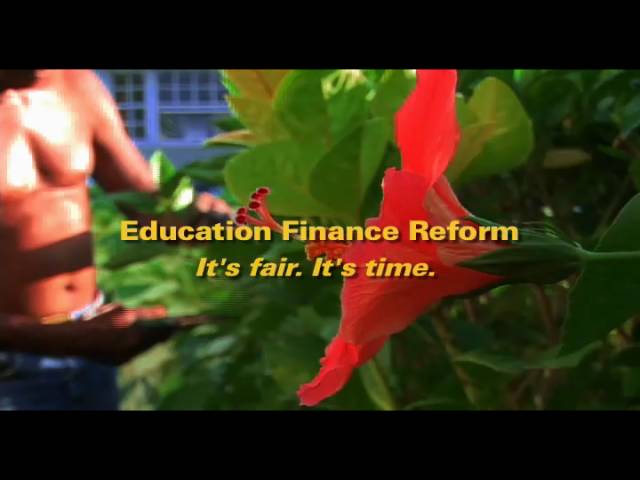By Emma Näslund-Hadley*
An education reform in Belize launched in 2011 to make government funding more equitable on a per student basis reduced the gap between the richest and poorest schools by 20% and continues to close this gap.
Not long ago, schools in Belize’s wealthiest communities received up to twenty times more public funding per student than other schools.
The financing of secondary education was a mixture of grants and transfers from different sources. The most important source of government funding to both public and private schools was grants to pay teachers.
Over time, given there were no limits in place for what subject areas would be publicly funded, some schools in more affluent and influential urban areas had come to offer very broad and sophisticated curricula.
In addition to having more teachers, the teachers in these schools were also paid higher salaries because of seniority or level of academic training. The ultimate effect of this was that these schools were able to capture a disproportionate share of public education funding.
At the same time, schools in less affluent areas did not always have enough teachers to offer even the core subjects.
In 2009, the Ministry of Education embarked on the arduous task of figuring out the exact amount of public resources that was actually transferred to each school, with IDB support.
Once the extent of the unfairness in resource distribution among schools became clear, the reform task seemed daunting. The challenge, of course, lay in the Robin Hood-like nature of any reform attempt: taking from influential groups in society, and giving to those with little or no voice.
Reforms: the simpler, the better
The government spearheaded a lengthy dialogue with publicly funded private schools, the teachers union and church leaders, among others.
The reform which was launched in 2011 created quite a stir among certain groups, but a public information campaign under the slogan “It’s Fair Belize. It’s Time” helped ensure broad public support for fairness in education financing and equal opportunity for all students to a core curriculum.
The new financing formula is simple, straightforward and equitable. At its most fundamental level the formula is based on enrollment, replacing the previous complex reimbursement for salaries and different operational expenditures.
The ultimate aim is that all schools receive an equitable transfer on a per student basis, with additional resources for schools that serve at-risk students and those with special education needs.
The reform is being implemented gradually, over several years, to allow schools to adjust to the new funding levels. Notwithstanding, what has already been accomplished by Belize is a cause for celebration.
The gap in public funding for students in the top and bottom 10% of schools has shrunk by 20 percent. Some changes were dramatic, such as the high school in the Corozal district where public spending per student increased by 123 percent in just one year. Schools that suffered reductions in public per student funding have so far seen more modest changes of up to 26 percent.
Some challenges ahead
Interestingly, the schools that have been most in need of technical assistance to adapt to the new levels of funding are not those that had their funding reduced, but those that have received additional resources.
The challenge is to target the additional funds to improve education quality, and not merely provide more of the same. Among schools with decreased levels of funding, the changes are spurring conversations about inter-school collaboration to share teachers in non-core subject areas.
Lessons for the Region
Belizeans are, however, not the only ones who should pay attention to this effort to make school funding more equitable. Throughout Latin America and the Caribbean, there are school-financing systems that lack transparency and consistency, and that may be in similar need of reform. Hopefully Belize’s landmark reform will inspire others to follow suit and embark on efforts to increase school financing equity. It’s Fair. The Time is now.
_________________________
This post is part of a blog series on development effectiveness featuring stories on learning and experiences from IDB projects and evaluations.
* Since September 2002, Emma Näslund-Hadley is an education specialist in the Education Division at the Inter-American Development Bank (IDB) in Washington DC. She leads and collaborates in the design and execution of a wide spectrum of education sector projects. She is the coordinator of the Bank’s efforts to improve mathematics and natural science education.


Leave a Reply